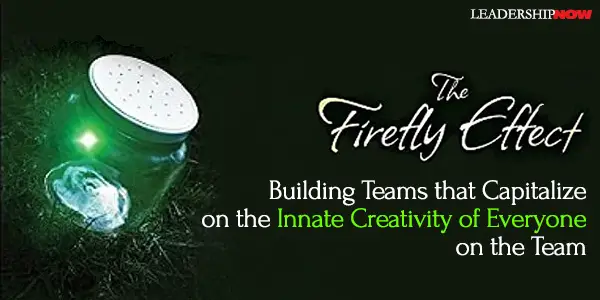 |
 |
11.09.09

Building Teams that Capitalize on the Innate Creativity of Everyone on the Team
“A lone firefly—like the lone genius—does not ignite the imagination of others,” writes Kimberly Douglas in The Firefly Effect. “It takes the brilliant light of many, and the creative effort of the entire team, to truly spark innovation with impact.” The job of the leader is to “create a safe environment in which every member of the team can knowingly and proudly claim those differences, and apply them in an optimal way to achieve the goals of the team.” The leader must provide the processes that will allow every other member of the team to see each other in this new light. These differences can create heat. “Fireflies know how to shine without creating heat—without wasting energy on unnecessary conflict.” Differences should compel us to look at individual differences more creatively. The team’s focus is key. “One of the most important things that a leader can do is keep the team focused on the real competition; those who exist outside the walls of the organization…. Making this the focus keeps people from clashing within the group. When this focus is lost, infighting and bickering among the team members thrives.” This means learning to communicate more and better. It means learning to view conflict in a new way; not as a destructive, inevitable evil, but rather as a constructive source of creative abrasion. The Firefly Effect is about releasing that spark of creativity that exists inside all of us and channeling it in a productive way. Douglas provides down-to-earth, tested and practical methods for inspiring your team and leveraging their innate abilities. She shows how you and your team can capitalize on what is right about the people on the team. 
Douglas provides much to think about and implement: Two key components drive powerful teams: where they’re going and how they’re going to work together to get there. The answers to these questions are inextricably tied. It simply means asking, you want to capitalize on team members’ unique differences to what end? You want to promote creativity and innovation targeted toward which business objectives, problems, or opportunities? In the end, Douglas illuminates the idea that “a single person has a substantial amount of power to truly make a difference in an organization by first believing in something, and then taking action on it.” That’s leadership. 
Posted by Michael McKinney at 10:34 AM
|
BUILD YOUR KNOWLEDGE
 

How to Do Your Start-Up Right STRAIGHT TALK FOR START-UPS 
Grow Your Leadership Skills NEW AND UPCOMING LEADERSHIP BOOKS 
Leadership Minute BITE-SIZE CONCEPTS YOU CAN CHEW ON 
Classic Leadership Books BOOKS TO READ BEFORE YOU LEAD |